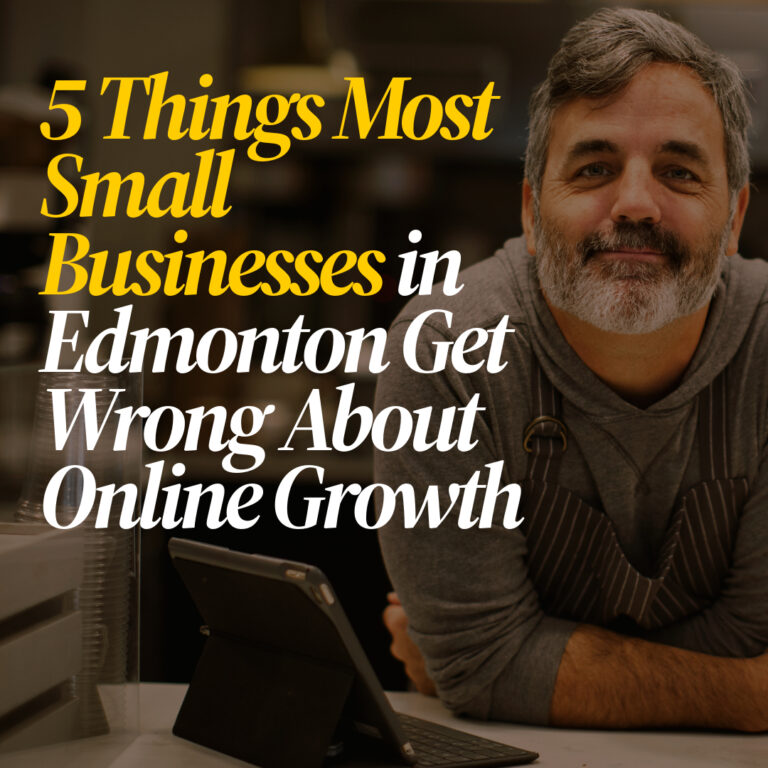7 SEO Terms Every Business Owner Should Know

7 SEO Terms Every Business Owner Should Know (With Real-World Use, Pricing & What-To-Do)
If you own a business and have a website, knowing a handful of essential SEO terms can mean the difference between being found online—or buried under your competitors. This article isn’t a list of buzzwords. Instead, it’s a breakdown of 7 real, practical SEO concepts that directly affect your visibility, sales, and marketing costs. No fluff. No AI-sounding nonsense. Just straight-up value.
1. Keyword Intent
What It Means: It refers to the reason behind a user’s search—what they’re trying to do: buy, learn, or find something.
Why It Matters: Ranking for a keyword like “best winter jackets Canada” is only useful if your page aligns with the intent. If the searcher wants reviews and you give them a checkout page, you lose.
How To Use It: Group keywords into three buckets:
✓ Informational (“how to fix a leaky faucet”)
✓ Navigational (“Facebook login”)
✓ Transactional (“buy running shoes online”)
What To Do: Optimize landing pages with transactional keywords. Blog posts? Stick to informational.
Pricing Insight: Keyword intent research is often bundled into SEO audits ($300–$800 one-time or part of a $1,000+/mo package).
2. On-Page SEO
What It Means: Everything you do on your website to improve rankings—meta tags, URL slugs, headings, image alt text, internal linking, etc.
Why It Matters: If Google can’t crawl and understand your page, it won’t rank. Period.
How To Use It:
✓ Use your main keyword in the title tag, H1, and URL.
✓ Write naturally, but smartly place keywords in paragraphs, lists, and alt tags.
What To Do: Run your page through tools like SEO Detective
Pricing Insight: On-page SEO optimization starts around $300/page for local sites or $1,200+/month for ongoing optimization.
3. Backlinks
What It Means: These are links from other websites that point to yours. They’re like online votes of confidence.
Why It Matters: Backlinks from reputable sources boost your site’s authority and help Google trust your content.
How To Use It:
✓ Get featured in local news or blogs.
✓ Offer to write guest posts.
✓ Get listed in industry directories (yes, they still work if they’re legit).
What To Do: Start with 3–5 relevant industry or local directories (e.g., Yelp, Clutch, Alignable). Use Ahrefs or Moz Link Explorer to check competitors’ backlinks.
Pricing Insight: High-quality backlink campaigns run from $500–$2,000/month, depending on scale and industry.
4. Domain Authority (DA)
What It Means: A scoring metric (0–100) from Moz that estimates your site’s ability to rank.
Why It Matters: It helps benchmark your site against competitors. A DA of 20 competing against DAs of 70+? You’ll need backlinks and quality content—fast.
How To Use It: Don’t obsess over the number. Use it as a competitive reference. Focus more on Topical Authority (more on that in the next article).
What To Do: Increase DA by:
✓ Publishing high-quality, in-depth content regularly.
✓ Getting backlinks from related, credible sites.
Pricing Insight: Not a service itself but often used within SEO audits or reporting ($200–$1,000+ depending on scope).
5. Technical SEO
What It Means: Site speed, mobile responsiveness, structured data, crawlability—anything to help search engines access and understand your site.
Why It Matters: A site that loads in 7 seconds? Google drops you like a hot potato. Users bounce. Sales vanish.
How To Use It:
✓ Compress images.
✓ Minify CSS and JavaScript.
✓ Implement schema markup.
What To Do: Use Google PageSpeed Insights and Lighthouse to flag issues.
Pricing Insight: Technical SEO fixes cost $500–$3,000 one-time or more for complex eCommerce builds.
6. Local SEO
What It Means: Optimizing your business to show up in local search and Google Maps.
Why It Matters: If you run a bakery in Edmonton and don’t appear for “bakery near me,” you’re leaving cash on the table.
How To Use It:
✓ Claim and optimize your Google Business Profile.
✓ Get reviews. Consistently.
✓ Add schema for local business info (address, hours, phone).
What To Do: Add your NAP (Name, Address, Phone number) consistently across all local directories.
Pricing Insight: Local SEO campaigns typically run from $500–$1,500/month.
7. CTR (Click-Through Rate)
What It Means: The percentage of users who click on your site after seeing it in search results.
Why It Matters: If your title and meta description don’t entice people to click, Google assumes your result isn’t relevant—even if you rank high.
How To Use It:
✓ Write clear, benefit-driven title tags.
✓ Use emotional triggers, questions, or numbers.
What To Do: A/B test meta descriptions using Google Search Console. Use tools like SEMRush for deeper performance metrics.
Pricing Insight: CRO (conversion rate optimization) and meta testing is often part of advanced SEO packages—expect $1,000+/month for consistent testing.
Final Tip
You don’t need to be an SEO pro, but knowing these 7 terms—and what they actually mean for your bottom line—can help you spot opportunities, avoid costly mistakes, and hire smarter.
Still unsure how to take the next step? Start with a full SEO audit. It’ll highlight where you stand and what’s worth fixing first.


